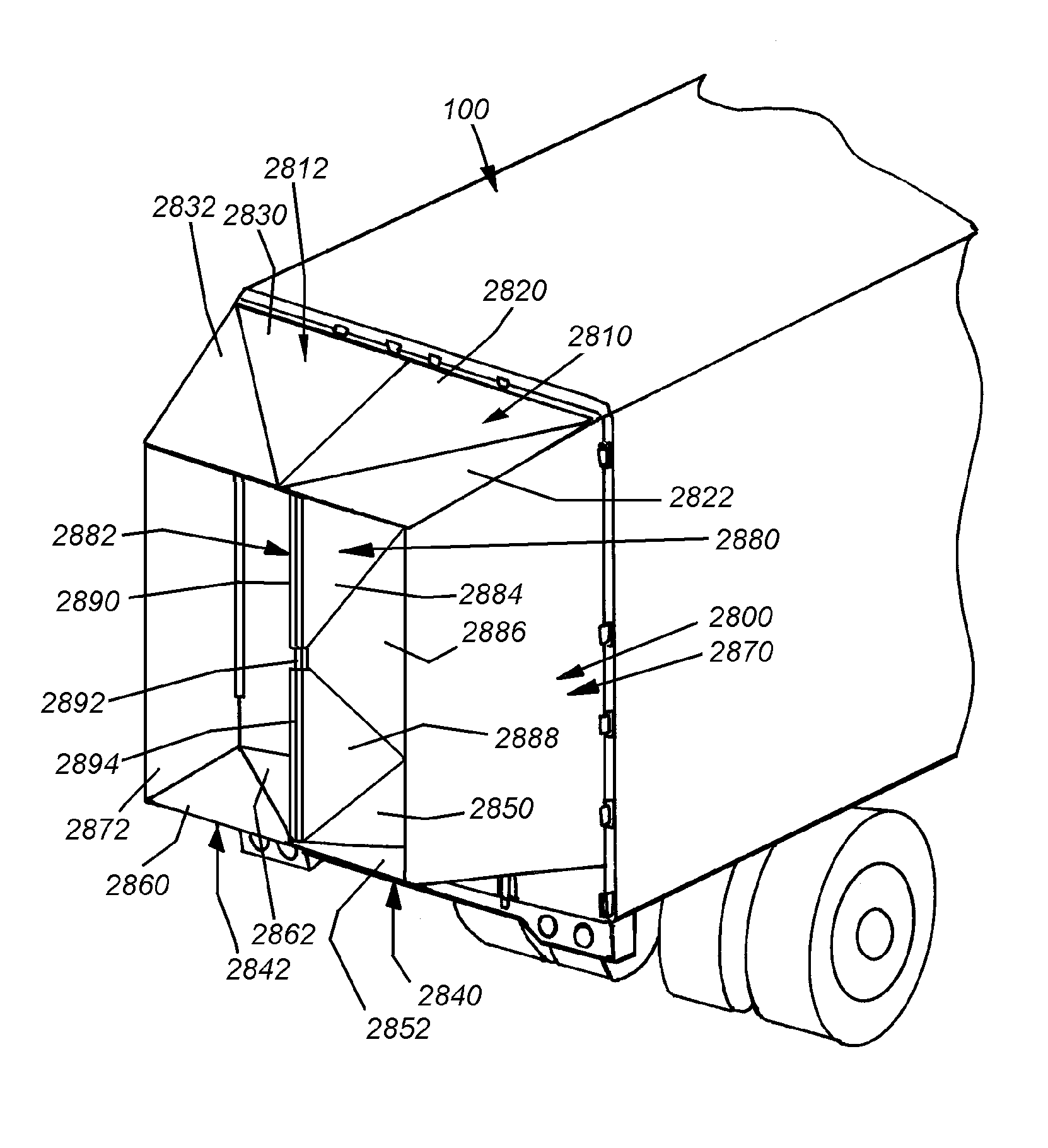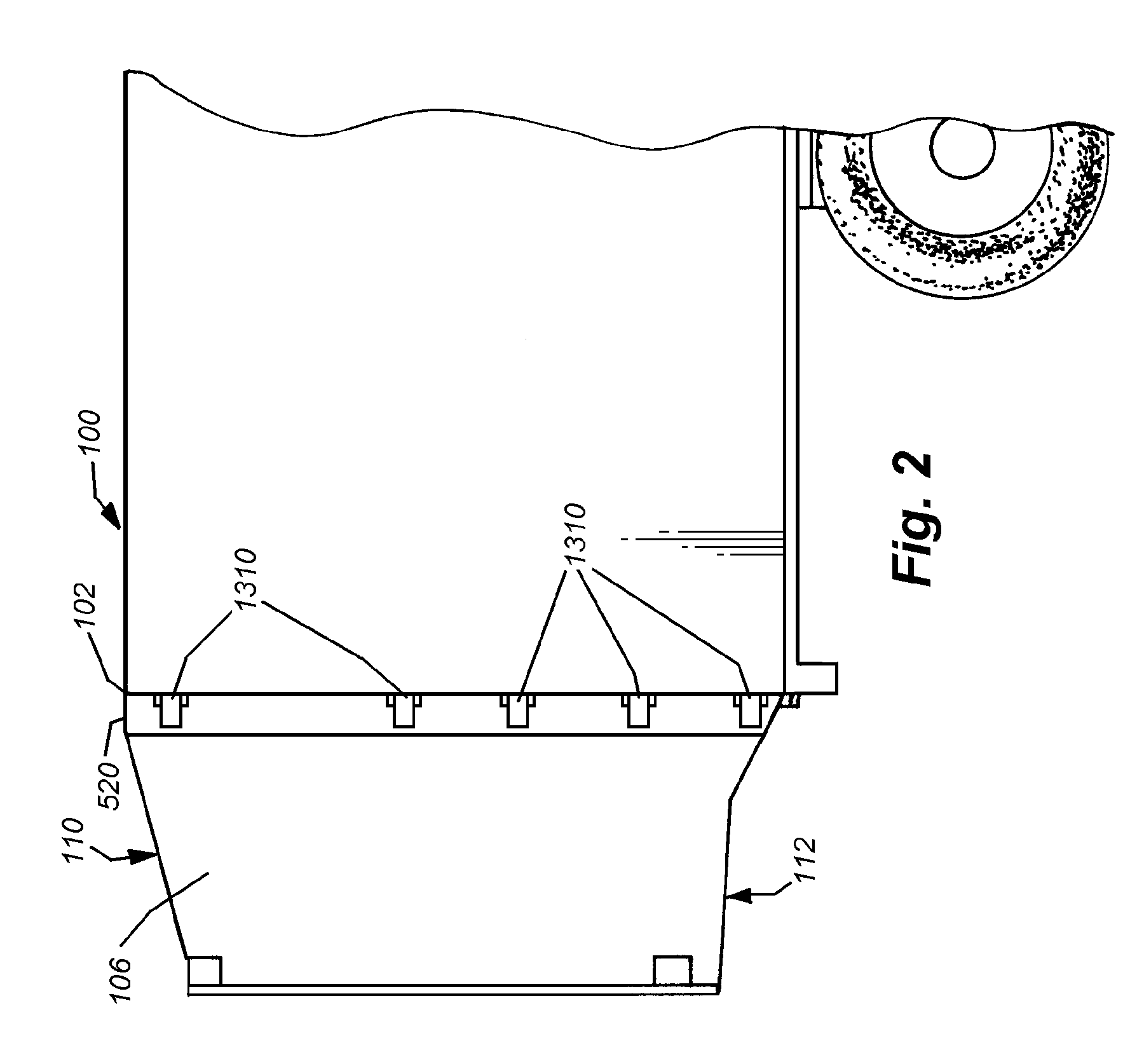Rear-mounted aerodynamic structure for truck cargo bodies
a rear-mounted, aerodynamic technology, applied in the direction of roofs, transportation and packaging, vehicle arrangements, etc., can solve the problems of large rear aerodynamic structures, inability to integrate with the structure and function of the rear cargo doors of trucks, and inability to move upwardly, so as to achieve rapid and easy transition, reduce drag, and avoid undue effort or strength
- Summary
- Abstract
- Description
- Claims
- Application Information
AI Technical Summary
Benefits of technology
Problems solved by technology
Method used
Image
Examples
Embodiment Construction
[0142]An exemplary truck trailer section 100 is shown in FIG. 1. The cab has been removed in this depiction for further clarity, but can be any acceptable size, model, type and configuration of motorized unit. It can be assumed that this cab includes appropriate roof and side aerodynamic structures to enhance the overall aerodynamic efficiency of the assembled truck. In accordance with an embodiment of this invention the trailer section includes, at its rear end 102, an aerodynamic structure 104 consisting of four inwardly tapered aerodynamic surfaces or panels 106, 108, 110 and 112. The surfaces / panels are formed from rigid, semi-rigid or somewhat-flexible sheet material that, as will be described further below, can be folded along hinge lines, or otherwise retracted, to allow access to the doors 120 that are mounted on the back 102. The thickness and perimeter shape of the panels is highly variable. In an exemplary embodiment, the panels can be formed from a lightweight metal, lik...
PUM
 Login to View More
Login to View More Abstract
Description
Claims
Application Information
 Login to View More
Login to View More - R&D
- Intellectual Property
- Life Sciences
- Materials
- Tech Scout
- Unparalleled Data Quality
- Higher Quality Content
- 60% Fewer Hallucinations
Browse by: Latest US Patents, China's latest patents, Technical Efficacy Thesaurus, Application Domain, Technology Topic, Popular Technical Reports.
© 2025 PatSnap. All rights reserved.Legal|Privacy policy|Modern Slavery Act Transparency Statement|Sitemap|About US| Contact US: help@patsnap.com



